UPSC Daily Current Affairs: 8th May 2025 | Current Affairs & Hindu Analysis: Daily, Weekly & Monthly PDF Download
GS1/History & Culture
100 Years of the Art Deco Style in Madras
 Why in News?
Why in News?
The Art Deco style, which was first introduced at the Paris Exposition on April 29, 1925, took about a decade to reach Madras. Its journey to India began in Bombay, where the first Art Deco structure, the Syndicate Bank building, was completed in 1932.
- Art Deco emerged in the 1920s and 30s, characterized by sleek geometric shapes and luxurious materials.
- The style marked a departure from older architectural styles such as Neo-classical and Indo-Saracenic.
- Art Deco was embraced by various sectors, including banks, cinemas, and residential areas, symbolizing modernity and cultural identity.
Additional Details
- Art Deco Style: This architectural style is known for its focus on manufactured goods and luxurious materials. It became prominent in buildings like the Casino theatre (1941) and commercial structures such as Dare House (1938).
- By the 1950s, Art Deco began to decline, being replaced by Modernist and Brutalist styles that aligned with Socialist ideologies.
- Laxman Mahadeo Chitale: A significant architect in introducing Art Deco to India, Chitale was recognized for his drawing skills and worked on notable projects, including the National Insurance Building (1938) and the Andhra Insurance Building (1939).
- His architectural style often featured corner entrances and street-facing facades, influenced by renowned architect Sir Edwin Lutyens.
The evolution of the Art Deco style in Madras reflects a unique blend of modernity and cultural identity, with contributions from architects like Laxman Mahadeo Chitale paving the way for its integration into Indian architecture.
Question:
Which one of the following was the first fort constructed by the British in India?
- (a) Fort William
- (b) Fort St. George*
- (c) Fort St. David
- (d) Fort St. Angelo
GS3/Economy
Cabinet Approves Revised SHAKTI Policy
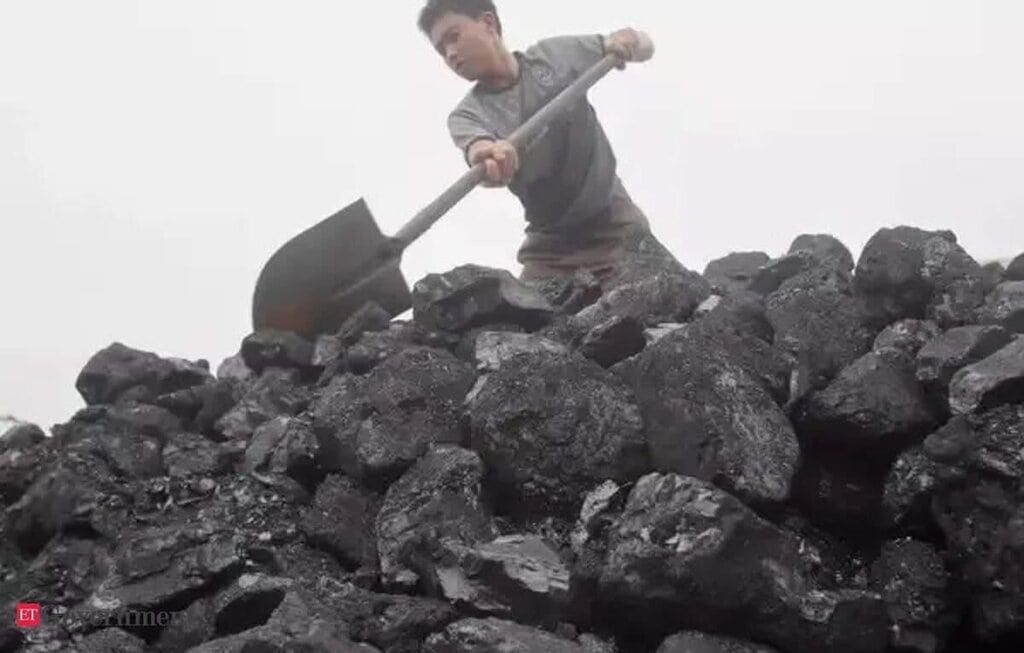 Why in News?
Why in News?
The Cabinet Committee on Economic Affairs (CCEA) has approved a proposal under the Revised SHAKTI (Scheme to Harness and Allocate Koyla Transparently in India) Policy. This initiative aims to enhance the availability of coal for both Central/State Sector Thermal Power Plants and Independent Power Producers (IPPs).
- The SHAKTI Policy was launched in 2017 by the Ministry of Power to facilitate a transparent mechanism for coal allocation.
- It replaced the prior nomination-based coal allocation system with an auction-based tariff bidding system, promoting fairness and transparency.
- Government-owned plants continue to receive coal via nominations, while private producers must acquire coal through competitive bidding.
- The policy aims to reduce coal imports and enhance energy self-sufficiency.
Additional Details
- Revised Policy Features (2024): The new policy simplifies the allocation process by merging eight criteria into two windows, improving business operations.
- Window-I: Allocates coal at notified prices for central and state utilities and their subsidiaries, including those with Power Purchase Agreements (PPAs) under Section 62 of the Electricity Act.
- Window-II: Allows coal and imported coal-based producers to acquire coal through premium-based auctions for 12 to 25 years, without needing a PPA.
- The policy promotes pithead plants, supports new capacity planning, and facilitates the transition of Imported Coal-Based (ICB) plants to reduce import dependence.
- Existing Fuel Supply Agreement (FSA) holders can now purchase coal exceeding 100% of their Annual Contracted Quantity (ACQ) during peak demand periods.
- Unrequisitioned surplus electricity can be sold on power exchanges, increasing plant utilization.
- There is no additional financial burden imposed on coal companies.
Beneficiaries of this policy include Coal India, SCCL, railways, state governments, and end consumers.
[UPSC 2023]
With reference to coal-based thermal power plants in India, consider the following statements:
- 1. None of them uses seawater.
- 2. None of them is set up in water-stressed districts.
- 3. None of them is privately owned.
How many of the above statements are correct?
- Options: (a) Only one (b) Only two (c) All three (d) None
This policy represents a significant step towards increasing coal availability and enhancing the efficiency of power generation in India.
GS2/International Relations
India–UK Free Trade Agreement (FTA) - A Strategic Economic Milestone
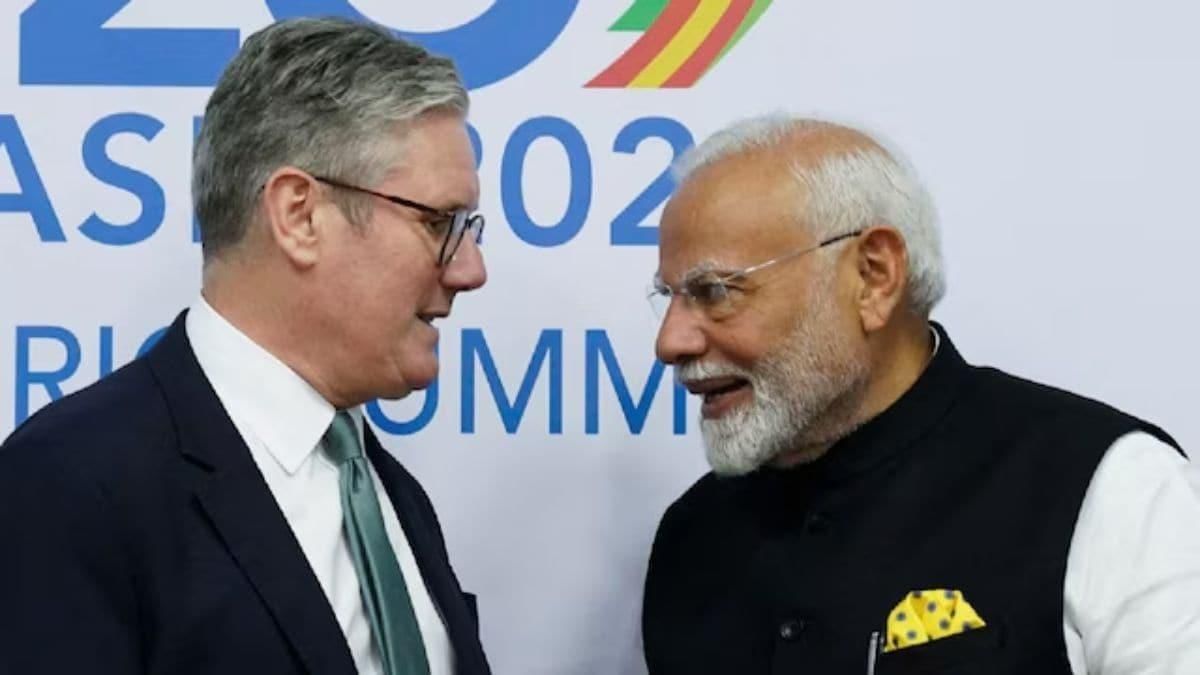 Why in News?
Why in News?
India and the United Kingdom successfully signed a Free Trade Agreement (FTA) on May 6, 2025. This agreement is significant as it marks the end of negotiations that had begun in January 2022 and has proceeded at a relatively brisk pace compared to other trade negotiations, such as those with the EU, which have been ongoing for nearly two decades.
- The FTA is a key element of the UK's post-Brexit trade strategy.
- India aims to enhance its global trade presence as part of its "Viksit Bharat" vision for 2047.
- The agreement includes provisions for improved market access and ease of mobility for professionals.
Additional Details
- Post-Brexit UK Strategy: Since exiting the EU in 2020, the UK has actively sought new trade partners, signing agreements with countries like Japan and Vietnam, and joining the CPTPP, thereby broadening its trade horizons.
- India's Trade Strategy: The FTA represents India's first major trade agreement outside Asia, demonstrating its intent to engage more deeply in global trade systems.
- Key Provisions: The FTA includes reduced tariffs on Indian exports such as pharmaceuticals and textiles, while the UK gains access to India's young consumer market.
- Economic Impact: The UK is expected to double its bilateral trade with India by 2030, enhancing investment flows in sectors like financial services.
In conclusion, the India-UK FTA is not merely a trade agreement but a crucial strategic and economic realignment. It highlights India's ambition to emerge as a significant global economic player while using FTAs as instruments for reform and growth. The success of this agreement will rely on effective implementation and ongoing dialogue between both nations.
GS1/History & Culture
Piprahwa Relics of Buddha
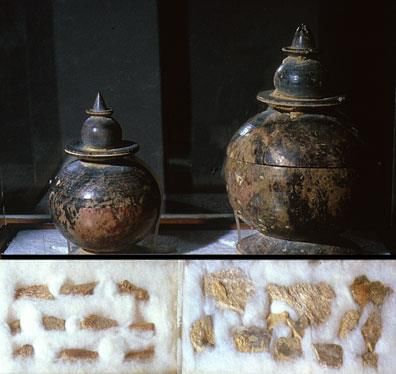 Why in News?
Why in News?
The Union Culture Ministry has successfully halted the auction of the sacred ‘Piprahwa’ Buddhist relics by Hong Kong, highlighting the importance of preserving cultural heritage.
- The Piprahwa relics were discovered in 1898 by William Claxton Peppe, an English engineer.
- The site is believed to be ancient Kapilavastu, where Prince Siddhartha (later known as Buddha) lived.
- The relics included bone fragments, caskets, and a variety of precious materials.
- The British Crown claimed the relics under the Indian Treasure Trove Act of 1878.
Additional Details
- Piprahwa Relics: Discovered during excavations, the relics were found in a stupa along with bone fragments believed to be Buddha's cremated remains, as well as caskets made of soapstone and crystal, and numerous gold ornaments and gemstones.
- The British Crown transferred a majority of the artifacts to the Indian Museum in Kolkata, which included about 1,800 pearls, rubies, topaz, and sapphires.
- After the Buddha's death (Mahaparinirvana), his cremated relics were divided among eight kingdoms, leading to the establishment of various stupas as significant pilgrimage sites.
- Emperor Ashoka later redistributed these relics, leading to the construction of thousands of new stupas across his empire.
- The stupa at Ramagrama is unique as it is believed to remain untouched and still contains the original relics.
The Piprahwa relics are not only significant for their historical value but also serve as a vital link to the life of Buddha and the spread of Buddhism. The preservation of these relics is crucial for maintaining the cultural heritage associated with Buddhism.
GS2/Governance
Cashless Treatment Scheme for Road Accident Victims
Why in News?
The Ministry of Road Transport and Highways (MoRTH) has officially notified the Cashless Treatment of Road Accident Victims Scheme, 2025, which came into force on May 5, 2025. In 2023, India reported over 4.80 lakh road accidents resulting in 1.72 lakh fatalities, highlighting the urgent need for such a scheme.
- The scheme provides financial coverage up to ₹1.5 lakh per person, per accident, for a maximum of seven days from the date of the accident.
- All victims, including those without health insurance, are eligible for treatment under this scheme.
- This initiative was introduced following a Supreme Court directive.
- The scheme aims to deliver critical care during the “golden hour”, which is defined as the first hour after a traumatic injury.
Additional Details
- Immediate Treatment: Treatment must be provided immediately and is fully covered up to ₹1.5 lakh for up to 7 days from the accident.
- Hospital Requirements: Designated hospitals are required to treat victims without delay or demanding any upfront payment. Non-designated hospitals may only offer initial stabilization, as defined in the guidelines.
- Nodal Agency: The State Road Safety Council serves as the nodal agency for implementation at the state level, working with the National Health Authority (NHA) to onboard hospitals, monitor care, and ensure timely reimbursements.
- Payment Claims: Hospitals must file payment claims via an online portal, attaching all required documentation. The State Health Agency will process these claims and may approve, partially approve, or reject them, with reasons provided.
- A national steering committee, chaired by the MoRTH Secretary and NHA CEO, will oversee the scheme’s implementation and compliance.
This scheme represents a significant step toward ensuring timely medical assistance for road accident victims, potentially saving many lives by facilitating prompt treatment.
GS3/Defence & Security
Precision Guided Long Range Weapons in Indian Military’s Arsenal
Why in News?
India recently conducted Operation Sindoor, targeting 21 terror camps across nine locations in Pakistan and Pakistan-occupied Kashmir (PoK) in retaliation for a terrorist attack in Pahalgam. The Indian Armed Forces executed precision strikes using advanced technology and specialized warheads to minimize collateral damage.
- Operation Sindoor involved precision strikes against terror camps.
- The Indian military's arsenal now includes advanced precision-guided long-range weapons and drones.
Additional Details
- Precision Guided Munitions (PGMs): Also known as smart weapons or smart bombs, PGMs are designed to accurately hit specific targets while minimizing collateral damage.
- Key Features of PGMs:
- Advanced Guidance Systems: Utilize GPS, laser guidance, infrared sensors, or radar for precise targeting.
- Mid-Flight Course Corrections: Capable of adjusting trajectory during flight to counter environmental factors.
- Reduced Collateral Damage: Precise targeting limits harm to civilians and infrastructure.
- Increased Accuracy: Offer significant improvements over unguided munitions with a smaller margin of error.
- Versatile Deployment: Can be launched from various platforms including aircraft, ships, and UAVs.
- Indian Air Force (IAF) Capabilities: The IAF deployed Rafale jets equipped with SCALP missiles for deep strikes and HAMMER missiles for medium-range precision strikes.
- HAMMER (Highly Agile and Manoeuvrable Munition Extended Range):
- Range: Up to 70 km, versatile for medium-range tactical operations.
- Advanced Features: Autonomous operation, jamming resistance, and ability to launch from low altitudes.
- SCALP-EG: An air-launched cruise missile with a range of 450 km, designed for long-range stealth missions, developed by MBDA.
- Operational Versatility: Effective at night and in all weather, enhancing operational capabilities.
- METEOR: A next-gen air-to-air missile with advanced features for superior air combat.
- BRAHMOS: A supersonic cruise missile developed by India and Russia, operational at speeds close to Mach 3.
- Loitering Munitions: Aerial weapons that combine surveillance and strike capabilities, enabling real-time intelligence and targeted strikes.
The procurement of advanced weapons systems, including loitering munitions, bolsters India’s military capabilities and enhances its operational readiness in response to emerging threats.
GS3/Economy
The Road to Regulatory Reform
Why in News?
The economic landscape of India is undergoing significant scrutiny as the country’s growth has been predominantly driven by the services sector rather than manufacturing. This unique situation highlights the urgent need for regulatory reforms to boost the manufacturing industry.
- India's manufacturing sector has seen stagnant growth, with its contribution to the economy barely increasing.
- Outdated regulations are a major hindrance to manufacturing, while services face increasing scrutiny.
- The recent establishment of a high-level committee for regulatory reform aims to simplify compliance processes.
Additional Details
- Regulatory Burden: Manufacturing is subject to stringent and often outdated regulations that create barriers to growth. For example, outdated inspection requirements can hinder business operations.
- De-Regulation Initiative: The new committee in the 2025 Budget seeks to reduce unnecessary inspections and promote self-certification in low-risk sectors, drawing on best practices from both India and Southeast Asia.
- Factor Market Reforms: Reforms in land and labour markets are essential for sustainable growth. Simplifying land acquisition processes and updating labour laws to accommodate gig work are crucial steps.
- Transparency and Clarity: Ensuring all approvals and requirements are publicly available online will help eliminate confusion and reduce corruption in regulatory processes.
- Cultural Shift in Bureaucracy: A change in mindset is needed among regulators to foster an environment that supports entrepreneurship rather than controls it.
In conclusion, while India's service-led growth demonstrates a resilient entrepreneurial spirit, achieving balanced and sustainable economic growth will necessitate significant reforms in the manufacturing sector. A concerted effort to deregulate and modernize the business environment is vital for India's ambition to become a developed economy by 2047.
GS3/Defence & Security
Operation Sindoor
 Why in News?
Why in News?
India has successfully executed Operation Sindoor, a collaborative military operation involving the Army, Navy, and Air Force, aimed at striking terrorist camps located in nine different areas within Pakistan and Pakistan-occupied Kashmir (PoK). This operation was initiated in response to a terrorist attack that occurred on April 22 in Pahalgam, which was linked to groups supported by the ISI.
- The operation targeted four locations in Pakistan (Bahawalpur, Muridke, Sialkot, Sarjal) and five in PoK.
- The primary aim was to dismantle the terrorist infrastructure operating with impunity.
Additional Details
- Purpose Behind Target Selection: The specific targets were selected to disrupt anti-India terrorist networks that are actively involved in cross-border terrorism.
- Involvement of Proscribed Terror Groups: The operations focused on sites associated with banned organizations such as Lashkar-e-Taiba (LeT), Jaish-e-Mohammad (JeM), and Hizbul Mujahideen (HM), which are known to receive backing from Pakistan's military and intelligence.
- Nature of Terrorist Facilities:These groups operate from training camps and launch pads often hidden within government-run structures.
- Launch pads: Used for staging infiltrations and arms training.
- Larger camps: Serve various purposes including religious indoctrination, propaganda, and recruitment.
- Redefining the Causal Link Between Pakistan and Terrorism: India framed the operation as a response not only to the Pahalgam attack but also to a long history of Pakistan-sponsored terrorism, particularly since the 2001 Parliament attack.
- Targeting Terror, Not the Pakistani Military: The strikes were classified as non-military and preemptive, similar to the 2016 surgical strikes and the 2019 Balakot airstrike. However, Operation Sindoor represents a significant escalation in depth and scale.
- Calibrated Action with Strategic Restraint: India emphasized that the operation was focused and measured, signaling that it does not aim for full-scale war, while also indicating that Pakistan's nuclear deterrence no longer protects its terror infrastructure.
- Unprecedented Scale and Reach: A total of 24 missile strikes were launched in one day, marking India's largest single-day military strike to date.
- Tri-Services Coordination and Advanced Weaponry: The operation involved coordinated efforts from the Army, Navy, and Air Force, utilizing real-time UAV confirmation for targeting precision.
- Symbolic Naming: The operation was named "Sindoor" to honor the victims of the Pahalgam attack, particularly the widows of the deceased, reflecting a shift towards moral justification.
Operation Sindoor signifies a pivotal moment in India's military strategy, showcasing a transition from reactive measures to a more assertive and preemptive approach against cross-border terrorism.
GS2/International Relations
Pakistan’s Complex Web of Terror Networks
Why in News?
Pakistan's longstanding support for various terrorist groups has come under scrutiny, particularly due to its ongoing presence on the Financial Action Task Force (FATF) grey list. Since 2008, Pakistan has faced challenges in effectively curbing the funding of terrorism, raising concerns over its international reputation and security collaborations.
- The Soviet-Afghan War in 1979 marked a pivotal moment in the development of Pakistan’s terror infrastructure.
- Pakistan’s ISI has been instrumental in channeling funds and resources to terrorist organizations.
- The country has repeatedly been added to and removed from the FATF grey list due to partial compliance with anti-terror financing measures.
- Recent operations by India, such as OPERATION SINDOOR, highlight ongoing tensions and responses to terrorist threats.
Additional Details
- Soviet-Afghan War Impact: The war empowered the ISI, allowing it to build a network of jihadi groups with U.S. and Saudi funding, facilitating the establishment of training camps for groups like Lashkar-e-Taiba (LeT) and the Haqqani Network.
- Financing Mechanisms:Various channels fund terrorism, including:
- Charities and Front Organizations: Groups often operate under the guise of humanitarian organizations to raise funds.
- Narcotics Trafficking: The drug trade, especially in the Afghan-Pakistan border region, significantly supports terrorist financing.
- FATF Grey Listing: Pakistan's repeated appearances on the FATF grey list, rather than the black list, result from its partial compliance with required actions and geopolitical support from nations like China and Turkey.
- Recent Military Operations: In response to terrorism, India executed precision airstrikes targeting terrorist infrastructure in Pakistan, showcasing military capabilities and escalating regional tensions.
In summary, Pakistan’s intricate terror networks, supported by various funding mechanisms and historical contexts, continue to pose significant challenges to regional security and international relations. The ongoing efforts by India and international bodies to address these issues remain critical for peace and stability in the region.
GS2/International Relations
The Building Blocks of An India-U.S. Energy Future
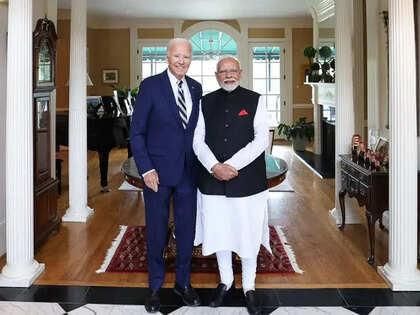 Why in News?
Why in News?
The contemporary global energy and geopolitical landscape is rapidly evolving, driven by changing power dynamics, technological innovations, and the urgent need for climate action. Recent diplomatic engagements between the United States and India present a significant opportunity to strengthen a strategic partnership focused on energy and defense, aiming for long-term collaboration rather than short-term alignment.
- India's energy security is crucial for its development and climate strategies, focusing on resource availability, supply chain integrity, and sustainability.
- The U.S. and India have signed agreements aimed at diversifying critical mineral supply chains, crucial for clean energy technologies.
- Nuclear energy is positioned as a key component in India's low-carbon energy portfolio, essential for meeting rising electricity demands.
Additional Details
- Energy Security: India's approach is based on three pillars: predictable resource availability, supply chain protection, and sustainability in energy production.
- Critical Minerals: Essential for technologies like electric vehicles and renewable infrastructure, these minerals include lithium and cobalt. The U.S. and India are collaborating to reduce dependence on Chinese supply chains, which dominate rare earth processing.
- Nuclear Energy: With an ambitious target of 100 GW of nuclear power by 2047, India needs to accelerate its nuclear project deployment, which currently stands at just over 8 GW.
- Holistic Perspective: Critical minerals should be viewed as enablers beyond just mining, fostering cross-sectoral collaboration for long-term innovation.
- Long-Term Commitment: Developing mining infrastructure requires a 20-year roadmap, highlighting the importance of strategic stockpiles and international partnerships.
- Necessary Reforms: Streamlining nuclear project timelines and integrating private sector investment are vital for the successful expansion of nuclear energy capabilities in India.
- Strategic Vision: A resilient India-U.S. energy partnership is essential for mutual assurance in a volatile global environment, promoting cooperation in technology and workforce development.
The foundation for a robust India-U.S. partnership on energy and critical minerals is established. What remains essential is the commitment to operationalize this vision with strategic clarity and action. As India takes on a greater role in global energy governance, this moment is crucial for embedding cooperation into durable institutions and frameworks for a resilient future.
GS2/Governance
India and the 2025 Human Development Report
Why in News?
India has shown improvement in its ranking, now positioned 130th out of 193 countries in the 2025 Human Development Index (HDI), a rise from 133rd in 2022.
- India's HDI reflects notable advancements in health, education, and standard of living.
- The country has made progress in reducing multidimensional poverty.
Additional Details
- What is the Human Development Index (HDI)?: HDI is a composite statistic developed by the United Nations Development Programme (UNDP) that assesses a country's overall development based on three key dimensions: health (life expectancy), education (mean and expected years of schooling), and standard of living (GNI per capita).
- Ranking and Insights: HDI ranks countries on a scale from 0 to 1, with higher scores indicating better human development outcomes.
- Health (Life Expectancy at Birth): In 2023, India’s life expectancy reached 72 years, a significant increase from 58.6 years in 1990.
- Education: The average expected years of schooling for children in India improved to 13 years in 2023, up from 8.2 years in 1990.
- Standard of Living: India’s GNI per capita increased from $2,167 in 1990 to $9,046 in 2023, indicating improved economic well-being.
- Inequality Adjustments: India's HDI value of 0.685 in 2023 was impacted by inequalities, particularly in gender and income, which remain significant challenges.
- Multidimensional Poverty Index (MPI): India saw 13.5 crore people escape poverty between 2015-16 and 2019-21, highlighting significant progress in reducing multidimensional poverty.
Impact of the Pandemic on India's HDI Recovery
- Health Impact: The pandemic adversely affected life expectancy due to higher mortality rates and healthcare disruptions.
- Education Disruptions: School closures hindered educational progress, especially for underprivileged children, despite improvements in expected years of schooling.
- Economic Setbacks: Lockdowns severely impacted economic activities, affecting income and employment, particularly in the informal sector.
Challenges in Improving India’s HDI
- Income Inequality: Income disparity continues to be a major obstacle, with a 30.7% loss in HDI due to inequalities, affecting overall development outcomes.
- Gender Disparities: Low female labor participation (41.7% in 2023-24) and significant gender wage gaps impede progress toward improving HDI.
Leveraging AI for Development and Reducing Inequality
- AI in Public Service Delivery: AI can enhance the efficiency and transparency of public services, particularly for marginalized communities, ensuring better welfare distribution.
- Inclusive Education: AI can personalize learning experiences, improving access and quality of education in underserved areas.
- Job Creation through AI: AI can foster new job opportunities, particularly in agriculture and healthcare, promoting inclusive economic growth.
In summary, while India has made progress in its HDI ranking, challenges such as income inequality and gender disparities remain pertinent. The strategic use of AI can play a vital role in addressing these challenges, promoting equitable development and enhancing overall human development outcomes.
GS3/Science and Technology
India’s Expanding Space Vision: From Empowerment to Interplanetary Exploration
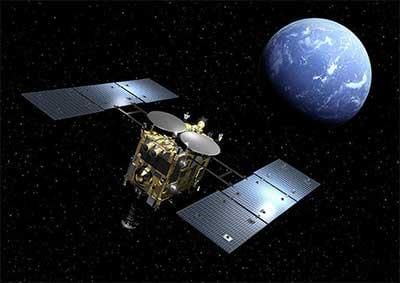 Why in News?
Why in News?
Recently, Prime Minister Modi emphasized India's advancing role in space exploration, declaring that Indian astronauts will soon set foot on the Moon. This announcement reflects a renewed confidence in India's space endeavors.
- India's ambition in space exploration focuses on global scientific collaboration and local empowerment.
- The nation has achieved significant milestones in space technology and exploration.
- Future plans include sending astronauts to the Moon and Mars, emphasizing India's commitment to interplanetary exploration.
Additional Details
- Space as a Catalyst for Empowerment: PM Modi stated that India's space initiatives serve dual purposes: advancing scientific research and empowering citizens. Indian satellites enhance governance and daily life through applications like weather forecasting and improved logistics.
- Achievements: India's space journey began with a modest rocket launch in 1963, culminating in notable milestones such as:
- Chandrayaan-3's successful landing near the lunar South Pole in 2023.
- Chandrayaan-1's discovery of water on the Moon.
- Mangalyaan's historic entry into Mars' orbit during its first attempt in 2014.
- Future Roadmap: PM Modi outlined ambitious plans for the next decades:
- By 2025, astronaut Shubhanshu Shukla will participate in a 14-day ISRO-NASA mission to the International Space Station.
- By 2035, the establishment of the Bharatiya Antariksha Station will enhance research and international collaboration.
- By 2040, Indian astronauts are expected to land on the Moon, with plans for Mars and Venus exploration as well.
- Private Participation: The emergence of over 250 space startups in India is fostering innovation in satellite technology and propulsion systems, contributing to economic growth and job creation.
- Strategic Diplomacy: India's commitment to using space for diplomatic purposes includes launching satellites for neighboring countries and initiating the G20 Satellite Mission, aimed at supporting the Global South.
In conclusion, India's space vision is not only about technological advancement but also about fostering international collaboration and empowering its citizens, solidifying India's role as a significant player in global space exploration.
|
57 videos|5393 docs|1142 tests
|
FAQs on UPSC Daily Current Affairs: 8th May 2025 - Current Affairs & Hindu Analysis: Daily, Weekly & Monthly
| 1. What is the significance of the Art Deco style in Madras and how has it evolved over the past 100 years? |  |
| 2. What are the key features of the revised SHAKTI policy approved by the Cabinet? |  |
| 3. How does the India-UK Free Trade Agreement (FTA) represent a strategic economic milestone? |  |
| 4. What are the historical and cultural significance of the Piprahwa relics of Buddha? |  |
| 5. What initiatives are included in the Cashless Treatment Scheme for road accident victims? |  |





















